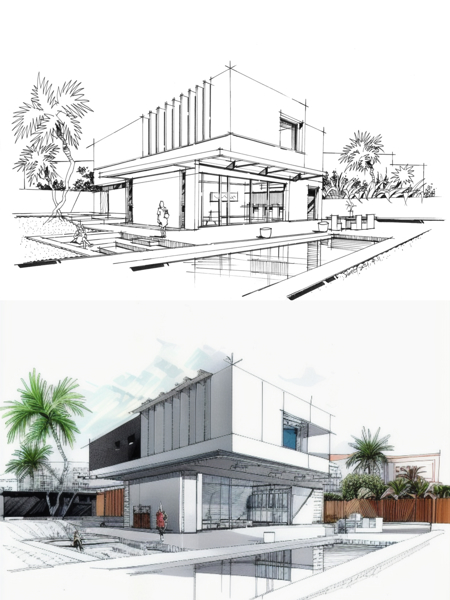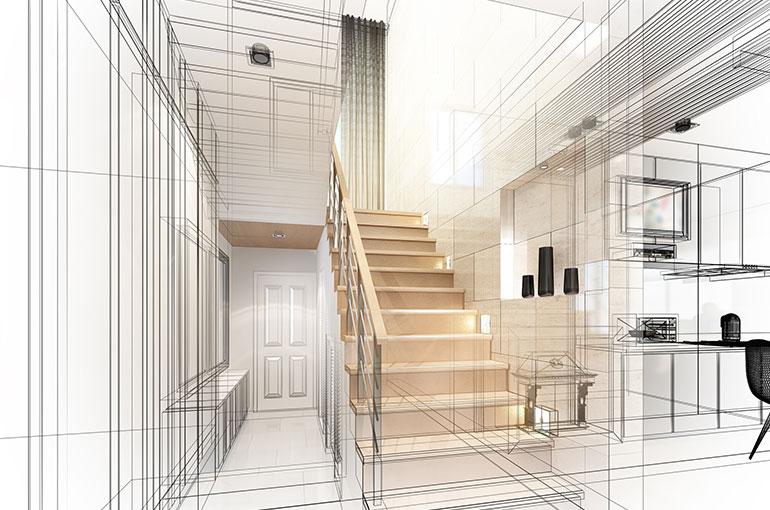Check Out Acclaimed Jobs by Distinguished CDA Architects
A Thorough Overview of Architectural Styles and Their Influence on Modern City Planning and Advancement
Architectural designs have long served as a mirror to the societal worths and technical improvements of their time, playing a vital function in shaping modern-day city preparation and advancement. From the splendour of Neoclassicism to the utilitarian strategy of Brutalism, each style has presented special concepts that affect city looks and performance.
Historical Summary of Architectural Styles

As cultures transitioned with the Middle Ages, Gothic architecture arised, identified by its verticality and complex outlining, mirroring the spiritual aspirations of the period. The Renaissance noted a resurgence of classical perfects, combining art and design in innovative manner ins which affected subsequent styles throughout Europe.

Today, architectural designs proceed to develop, driven by globalization and sustainability problems, reflecting a vibrant interaction between heritage and technology. This historical introduction underscores the relevance of architecture as a mirror of societal advancement and as a catalyst for metropolitan growth.
Key Architectural Styles Explained
The diversity of building styles shows the myriad impacts that shape our developed setting, each embodying unique characteristics and cultural values. Key architectural designs consist of Classic, Gothic, Baroque, Modernism, and Postmodernism, each standing for one-of-a-kind historical contexts and visual ideologies.
Classical architecture, rooted in ancient Greece and Rome, emphasizes symmetry, proportion, and using columns (cda architects). On the other hand, Gothic style, prospering in the Middle Ages, is identified by pointed arches, ribbed vaults, and flying buttresses, creating an angelic high quality in basilicas. Baroque style, arising in the 17th century, is marked by majesty, fancy embellishment, and a vibrant interaction of light and darkness
Innovation, which got energy in the early 20th century, prioritizes function over form, utilizing new products like steel and glass to develop minimal frameworks. Postmodernism, reacting against the austerity of Modernism, welcomes eclecticism and historic referral, usually including spirited aspects and irony.

Influence On Urban Preparation
Fit the development of cities, building styles significantly affect urban preparation decisions. The selection of architectural design frequently determines the looks, functionality, and total character of city environments. For example, innovation, with its emphasis on minimalism and capability, encourages open rooms and the assimilation of innovation, forming city designs that prioritize effectiveness and availability. On the other hand, typical designs may highlight historic conservation, leading to metropolitan styles that keep cultural heritage and promote pedestrian-friendly atmospheres.
Moreover, building designs can affect zoning laws and land make use of plans. Urban organizers must consider the prevailing building fads when making areas, making certain that brand-new growths integrate with existing frameworks. This factor to consider check that promotes cohesive metropolitan landscapes and improves community identity.
The implementation of specific building designs can likewise influence socioeconomic elements within a city. High-end modern styles may bring in upscale locals and businesses, leading to gentrification, while extra cost effective housing solutions could prioritize practical and lasting designs to suit diverse populaces. cda architects. Eventually, the interplay in between architectural designs and urban preparation creates vibrant cities that show both historic context and contemporary demands, shaping the lived experiences of their inhabitants
Sustainability and Modern Design
Architectural designs play a critical function in resolving modern obstacles, specifically in the realm of sustainability. As urban locations broaden and environmental problems increase, modern style significantly embraces lasting design principles that focus on energy effectiveness, source conservation, and marginal ecological effect.
Contemporary building movements, such as biophilic style and environment-friendly architecture, supporter for frameworks that harmonize with their environments, making use of all-natural materials and promoting biodiversity. These styles usually incorporate eco-friendly energy sources, such as photovoltaic panels and wind generators, to reduce reliance on fossil fuels and reduced carbon impacts.
Furthermore, the combination of innovative technologies, such as wise building systems, enhances power management, enhancing source use while guaranteeing passenger convenience. Cutting-edge water management techniques, consisting of rain harvesting and greywater recycling, more add to lasting city settings.
Significantly, sustainability prolongs past ecological worries; it includes look at this website social and economic dimensions. By promoting neighborhood wellness and promoting inclusivity, modern architectural styles straighten with lasting growth goals. The development of architectural practices proceeds to form durable cities that not only meet the needs of the existing however likewise safeguard the future for generations to come.
Area Involvement in Style
Neighborhood engagement in layout offers as a critical bridge between architects and the populaces they serve, guaranteeing that the constructed setting reflects the demands and goals of its individuals. This collaborative procedure welcomes community participants to contribute their understandings and choices, cultivating a sense of possession and obligation toward the areas they inhabit.
Reliable community involvement employs numerous methods, such as workshops, studies, and public online forums, to collect varied point of views. These approaches assist in a two-way dialogue, enabling architects to comprehend regional contexts while equipping residents to articulate their concerns and wishes. This inclusivity not just enhances the layout quality however likewise advertises social equity by attending to the distinct difficulties faced by marginalized teams.
Furthermore, area engagement can cause innovative services that might not emerge in a traditional design procedure. By integrating local understanding and cultural worths, designers can create rooms that reverberate even more deeply with customers, boosting usability and sustainability. Eventually, focusing on area involvement in design processes leads to atmospheres that support social communications, support health, and strengthen community ties, thus playing a crucial duty in forming modern-day urban landscapes.
Final Thought
Building styles have greatly affected contemporary city planning and growth, showing progressing cultural and technological contexts. As cities proceed to grow and adapt, the recurring discussion between building heritage and contemporary design concepts will remain important in creating comprehensive, lively areas that enhance quality of life and advertise social equity.